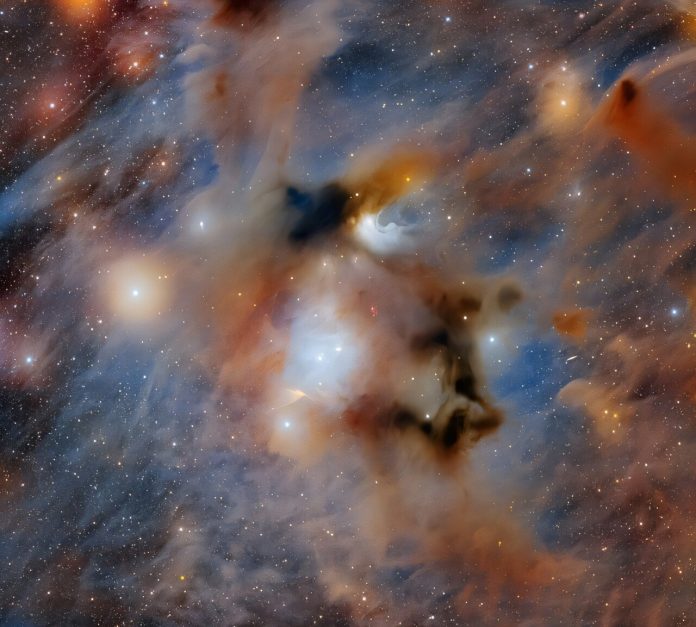
A new image taken with the powerful Dark Energy Camera (DECam) shows a breathtaking view of a dark, dusty region in space called the Chamaeleon I dark cloud.
This dense area of gas and dust, located about 500 light-years from Earth, is one of the closest places where new stars are being born.
The image was captured using the 570-megapixel DECam on the Víctor M. Blanco 4-meter Telescope in Chile.
It highlights the quiet beauty of Chamaeleon I, a cosmic nursery where baby stars are slowly forming from cold clouds of gas. These clouds look dark and shadowy in space but are full of the raw materials needed to create stars like our Sun.
Chamaeleon I is part of a much larger group of clouds known as the Chamaeleon Complex.
This region stretches across the southern constellation Chamaeleon and even touches nearby constellations like Apus, Musca, Carina, and Octans. While Chamaeleon I is actively forming stars, its neighbors—Chamaeleon II and III—show little or no star-forming activity.
In the center of the image is a bright spot called Cederblad 111. This is a reflection nebula, which means it doesn’t give off its own light but instead shines by reflecting the light of nearby stars. These types of nebulae glow softly when young stars nearby scatter their light off dust particles in the cloud.
Just above it is another reflection nebula called Cederblad 110, shaped like a letter C. It glows in a similar way, lit up by light from young stars forming close by.
Below these glowing clouds lies the orange-tinted Chamaeleon Infrared Nebula. It looks like the wings of a celestial bird and is made of gas moving at high speeds. This gas is being pushed out by a newborn star hidden deep in the cloud. As the gas carves out a tunnel in the dust, light from the young star escapes and reflects off the walls, creating the glowing, wing-like structure.
Scattered across Chamaeleon I are small bright patches known as Herbig-Haro objects. These form when jets of gas from young stars slam into the surrounding material. You can spot one of these as a faint red dot between Cederblad 111 and 110.
Together, these features reveal a beautiful but busy part of our galaxy, where stars are slowly taking shape. Looking at places like Chamaeleon I helps scientists understand how our own Sun and solar system may have formed long ago.
Source: KSR .



